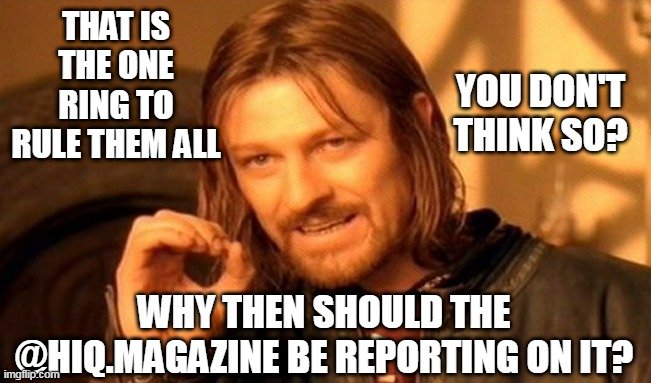
What is Layer 2 in blockchain?
A Layer 2 (L2) is a second layer of technology built on top of a Layer 1 (L1) blockchain to help increase computational throughput and drive greater efficiencies.
The best example of an L1 is Ethereum. Developed when blockchain was in its infancy as the first blockchain with smart contract functionality, Ethereum quickly encountered congestion problems due to the high number of decentralised applications (dApps) being built on it.
Notable surges in user activity that put a major strain on Ethereum included the CryptoKitties craze of 2017, the DeFi summer of 2020, and the crypto bull market of 2021, all of which placed gas fees beyond the reach of many people.
The barrier to entry forced other developers to look for alternative solutions that would help improve Ethereum’s scalability, ramp up transaction speeds and reduce gas fees while maintaining a high level of security. This so-called ‘blockchain trilemma’ was largely solved with the advent of L2s.
Built on top of the Ethereum network, L2s can handle intensive computational tasks off-chain, easing pressure on Ethereum’s main chain. Without these L2s, transaction throughput would remain persistently low and fees stubbornly high — certainly too high to make economic sense for frequent users. Certain high-volume use cases, including gaming, would also be unviable.
This latter point is particularly important for blockchain gaming companies such as Myria. And it’s why Myria’s team has been working tirelessly to create a fully decentralised L2 protocol that delivers the speed, scalability, security and overall user experience gamers expect.
How Myria’s Ethereum L2 solution works
For Myria, these capabilities have been made possible by ZK-STARKs, short for Zero-Knowledge Scalable Transparent Arguments of Knowledge.
According to the Starkware site:
‘STARK is a proof system. It uses cutting-edge cryptography to provide polylogarithmic verification resources and proof size, with minimal and post-quantum-secure assumptions.’
In layman’s terms, ZK-STARKs bundles thousands of transactions into blocks away from the Ethereum main chain. These blocks are given a STARK proof, verifying the transactions as authentic. This is known as a ZK-Rollup validity proof. These blocks of packaged transactions are then aggregated into tranches of up to 200 block proofs before being submitted to Ethereum’s L1 as a single contract.
To put this in perspective, if Ethereum’s L1 were to process the same number of transactions at roughly 30 transactions per second, it would take around 5 minutes to complete the same task, causing the type of network congestion and unsustainable costs already mentioned.
The level of throughput Myria can achieve with ZK-STARKs of up to 9000 TPS, however, will ensure that the gaming efficiencies on its platform will be second to none.
Why Myria decided not to use sidechains to scale?
In exploring scaling options, Myria decided against using EVM-compatible sidechains. Although they provide excellent scalability, sidechains fail to pass muster when it comes to security due to relying on their own centralised consensus models. In this respect, they fall down in a vital area of solving the ‘blockchain trilemma’.
By moving computation and state storage off-chain and using ZK-Rollups instead, Myria has achieved scalability without sacrificing the high level of security for which Ethereum’s L1 protocol is renowned. By using validity proofs, Ethereum automatically knows that transactions submitted by Myria’s L2 to the Ethereum main chain are verified and can be trusted.
What this means in practical terms is that, through careful selection of the most appropriate technology, Myria has fulfilled its ambition of empowering digital assets, NFTs and blockchain gaming with fast and secure transactions that deliver seamless blockchain-enabled gaming experiences.
What does it mean to use Myria’s L2?
Myria’s development team chose ZK-STARKs as its ZK-Rollup because it has the advantage of being faster than other ZK-Rollup technologies. With publicly verifiable zero-knowledge proofs, ZK-STARKs make Myria’s L2 the ideal environment for studio partners to build games and harness communities.
Zero transaction fees and fast finality mean that, for end users, the gaming experience is seamless, enjoyable, engaging and, from a financial standpoint, stress-free. Gone are the days of paying $50 to mint an NFT or transfer a digital asset via Ethereum. All Myria Studios titles will be free to play and transact within, while empowering gamers with true ownership of in-game assets that hold real-world value.
Looking Forward
Myria L2 is built for everyone who wants 0 cost transactions and a fast way to use Ethereum without sacrificing security or decentralization.
Moving forward, building on Myria will be permissionless — meaning anyone can build their NFT or blockchain gaming project on Myria L2. Myria’s mission is to drive mass adoption of NFTs by simplifying creator and user experience.
And this is only the beginning.






